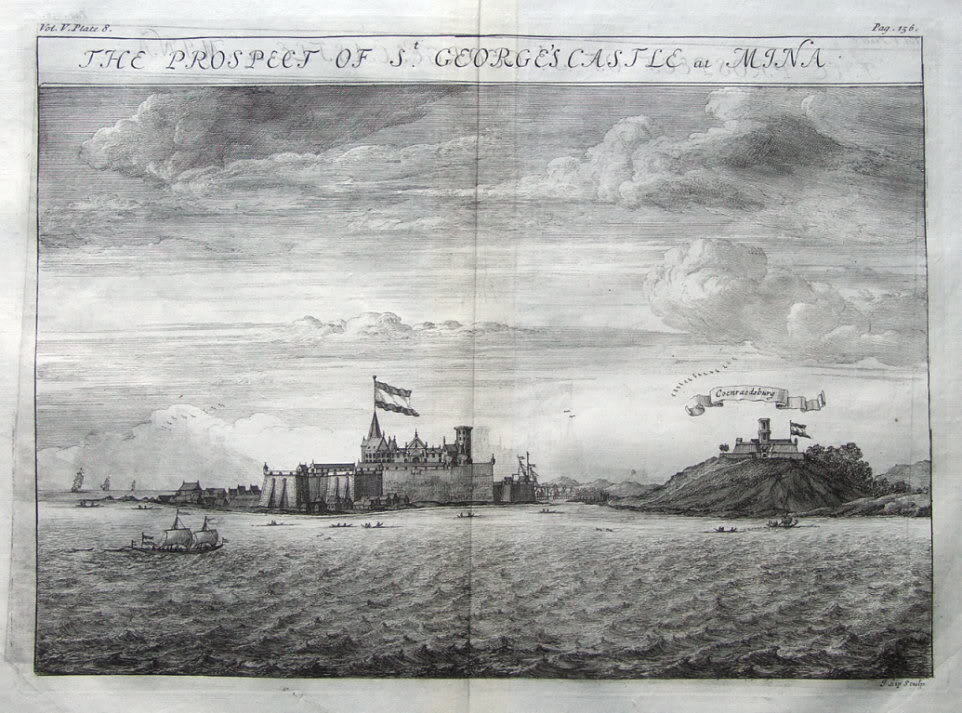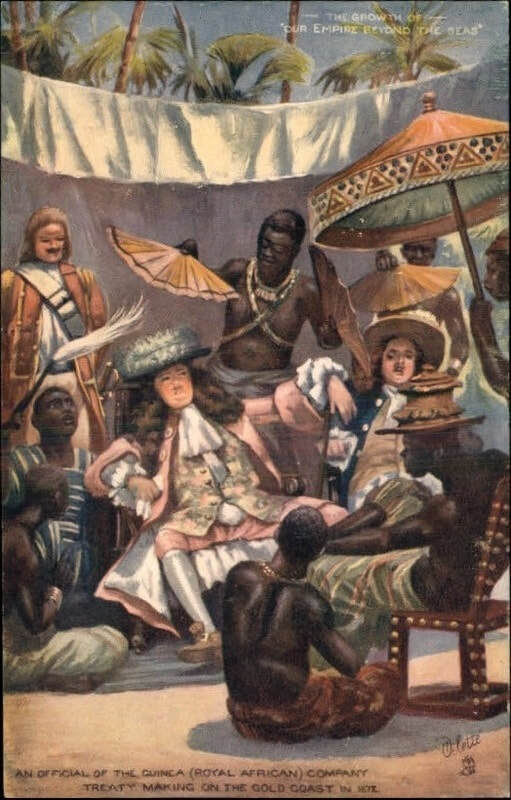
(c) Remo Kurka / Elmina - Early picture of the two castles.
The Portuguese were the first Europeans to reach the area that would later be known as the Gold Coast, arriving there in 1471. Their journey to this region was part of a larger exploration initiative that had begun decades earlier. In 1418, under the direction of Prince Henry the Navigator, Portuguese ships first set sail to explore the western coast of Africa. These early voyages were driven by a mixture of economic ambition, strategic considerations, and religious fervor.
One of the major motivations for Portuguese exploration was the lure of Africa’s rumored wealth. Tales had spread of lands abundant in gold and ivory, and the Portuguese were eager to tap into these resources. At the same time, they were searching for a sea route to India. By finding a way around the African continent, they hoped to bypass the powerful Arab trading networks that controlled overland routes to Asia, thereby securing direct access to the lucrative spice trade.
Advertisement

Religious zeal also played a key role in these endeavors. Like many Europeans of the era, the Portuguese were deeply motivated by Christianity and saw their voyages as opportunities to spread the faith. In this context, they hoped not only to convert African populations but also to find an ally in the mysterious figure of Prester John—a mythical Christian king said to rule over a powerful kingdom somewhere in Africa. An alliance with him, they believed, could strengthen Christendom in its struggle against Islamic powers.
These intertwined motives—economic, strategic, and religious—led to the gradual development of what became known as the Guinea trade. With each passing expedition, Portuguese explorers pushed further down the African coastline, slowly expanding their knowledge of the region and establishing trading relationships along the way. This process unfolded over the course of fifty years, culminating in the arrival at Elmina in 1471, during the reign of King Afonso V of Portugal.
By the time the Portuguese reached Elmina, interest among the royal court in African exploration had begun to wane, largely due to the limited profits gained from earlier voyages. As a result, the Portuguese crown entrusted responsibility for the Guinea trade to a private merchant, Fernão Gomes. Gomes, in turn, continued the southward exploration and trade ventures under royal license.
Upon reaching Elmina—located in present-day Ghana—Gomes found a well-established gold trade already thriving among the local African communities and Arab and Berber traders who frequented the area. Recognizing the economic potential, he set up a Portuguese trading post there. The site quickly became known as “A Mina,” meaning “the Mine” in Portuguese, due to the richness of the gold that could be acquired. This marked the beginning of a more sustained European presence on the West African coast and laid the foundations for centuries of trade, colonization, and cultural exchange.
Advertisement